第25章 THE COUNTESS AND THE COZENER(11)
Mention is made by Weldon of the evidence given by Symon, servant to Sir Thomas Monson, who had been employed by Mrs Turner to carry a jelly and a tart to the Tower.Symon appears to have been a witty fellow.He was, for his pleasant answer,'' dismissed by Coke.
My lord told him:Symon, you have had a hand in this poisoning business----''
No, my good lord, I had but a finger in it, which almost cost me my life, and, at the best, cost me all my hair and nails.'' For the truth was that Symon was somewhat liquorish, and finding the syrup swim from the top of the tart as he carried it, he did with his finger skim it off: and it was believed, had he known what it had been, he would not have been his taster at so dear a rate.Coke, with his bullying methods and his way of acting both as judge and chief prosecutor, lacks little as prototype for the later Judge Jeffreys.Even before the jury retired he was at pains to inform Mrs Turner that she had the seven deadly sins: viz., a whore, a bawd, a sorcerer, a witch, a papist, a felon, and a murderer, the daughter of the devil Forman.'' And having given such a Christian example throughout the trial, he besought her to repent, and to become the servant of Jesus Christ, and to pray Him to cast out the seven devils.'' It was upon this that Anne begged the Lord Chief Justice to be merciful to her, putting forward the plea of having been brought up with the Countess of Essex, and of having been a long time her servant.'' She declared that she had not known of poison in the things that were sent to Sir Thomas Overbury.
State Trials.
The jury's retirement was not long-drawn.They found her guilty.Says Weldon:
The Wednesday following she was brought from the sheriff's in a coach to Newgate and there was put into a cart, and casting money often among the people as she was carried to Tyburn, where she was executed, and whither many men and women of fashion followed her in coaches to see her die.
Her speeches before execution were pious, like most speeches of the sort, and moved the spectators to great pity and grief for her.''She again related her breeding with the Countess of Somerset,'' and pleaded further of having had no other means to maintain her and her children but what came from the Countess.''This last, of course, was less than the truth.Anne was not so indigent that she needed to take to poisoning as a means of supporting her family.She also said that when her hand was once in this business she knew the revealing of it would be her overthrow.'' In more than one account written later of her execution she is said to have worn a ruff and cuffs dressed with the yellow starch which she had made so fashionable, and it is maintained that this association made the starch thereafter unpopular.It is forgotten that with Anne the recipe for the yellow starch probably was lost.Moreover, the elaborate ruff was then being put out of fashion by the introduction of the much more comfortable lace collar.In any case, There is no truth,'' writes JudgeParry,
in the old story that Coke ordered her to be executed in the yellow ruff she had made the fashion and so proudly worn in Court.What did happen, according to Sir Simonds d'Ewes, was that the hangman, a coarse ruffian with a distorted sense of humour, dressed himself in bands and cuffs of yellow colour, but no one heeded his ribaldry; only in after days none of either sex used the yellow starch, and the fashion grew generally to be detested.
Probably started by Michael Sparke (Scintilla'') in Truth Brought to Light (1651).
Pretty much, I should think, as the tall `choker' became detested within the time of many of us.After Mrs Turner Sir Gervase Elwes was brought to trial as an accessory.The only evidence against him was thatof the liar Franklin, who asserted that Sir Gervase had been in league with the Countess.It was plain, however, both from Weston's statements and from Sir Gervase's own, that the Lieutenant of the Tower had done his very best to defeat the Turner-Essex-Northampton plot for the poisoning of Overbury, throwing away the rosalgar'' and later draughts, as well as substituting food from his own kitchen for that sent in by Turner.
Although it must have been clear that if any of what was alleged against him had been true Overbury's poisoning would never have taken five months to accomplish, he was sentenced and hanged.''
Sabatini, The Minion.
This, of course, was a glaring piece of injustice, but Coke no doubt had his instructions.Weston, Mrs Turner, Elwes, and, later, Franklin had to be got out of the way, so that they could not be confronted with the chief figure against whom the Great Oyer was directed, and whom it was designed to pull down, Robert Carr, Earl of Somerset --and with him his wife.Just as much of the statements and confessions of the prisoners in the four preliminary trials was used by Coke as suited his purpose.It is pointed out by Amos, in his Great Oyer of Poisoning, that a large number of the documents appertaining to the Somerset trial show corrections and apparent glosses in Coke's own handwriting, and that even the confessions on the scaffold of some of the convicted are holographs by Coke.As a sample of the suppression of which Coke was guilty I may put forward the fact that Somerset's note to his own physician, Craig, asking him to visit Overbury, was not produced.Yet great play was made by Coke of this visit against Somerset.Wrote Somerset to Craig, I pray you let him have your best help, and as much of your company as he shall require.''